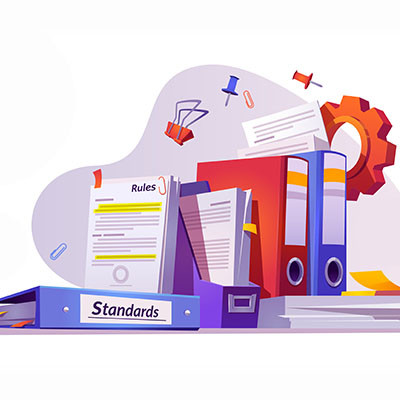IC Data Communications LLC Blog
Technology plays a pivotal role in the operations of most businesses, but its primary function is to empower and support the workforce. Many employees have specific expectations when it comes to the technology provided by their organizations. Failure to meet these expectations can drive them to seek employment elsewhere. Let’s delve into five ways technology bolsters your employees' productivity.
Sure, retailers have to manage their inventory effectively, but have you ever thought about the way your own business manages what it keeps on hand? Today we want to discuss five ways your business can more effectively manage inventory—and it turns out technology plays a pretty significant part in improving any inventory control system.
In many ways, a business is only as capable as its sales team allows it to be… and nowadays, a sales team is only as capable as their tech allows them to be. Let’s take a few minutes to discuss how you can turn this to your advantage by providing your sales team with the technology that supports their goals.
Over the course of a year, a month, or even a single day, your business accumulates and utilizes a lot of data. You need systems in place to make good use of this data, otherwise your business is leaving efficiency on the table. Today we want to go over some proper uses for your data and how to make the most of this golden opportunity.
Many businesses, irrespective of their size, are increasingly turning towards managed services to streamline their operations, reduce expenses, and elevate their overall customer value proposition. The utilization of managed services has revolutionized the landscape, not just in terms of cost-saving, but also in facilitating businesses to grow and extract greater value from their IT infrastructure. Let's take a look into how managed services achieve this dual objective.
In an era where businesses rely heavily on data and technology, the need for comprehensive disaster recovery solutions has never been more critical. The stakes are high when it comes to safeguarding your company's digital assets and ensuring business continuity in the face of unforeseen disasters. This is where Disaster Recovery as a Service (DRaaS) comes into play.
Businesses need to be cognizant of the role technology plays in today’s operations. Not only do you stand to lose ground on your competition if you fail to properly invest in your technology, it can have other negative effects on your business as well. This week, we outline eight things that can go wrong if you aren’t constantly looking to build a technologically savvy business.
The United States Federal Trade Commission’s mandate is to prevent fraud and promote consumer protection in today's interconnected world, where the digital landscape continues to evolve at a rapid pace. The FTC recognizes the importance of safeguarding consumer information and has implemented their Safeguards Rule as a means to ensure that businesses protect sensitive data from unauthorized access and misuse. Let’s take a look at the Safeguards Rule and what you need to know about it in regard to your business.
How does your business handle communication? Does it struggle to properly use its technology and collaboration tools? If so, we have some tips that can help you avoid the most common collaboration mistakes, particularly those related to data security. Read on to learn how you can ensure you’re not putting your data at risk needlessly with inappropriate collaboration security mistakes.
When you consider your business’ investments, you probably think about things like the hardware your team uses and the software this hardware supports. You might think about the furniture you’ve purchased to outfit your office. However, one often overlooked—but incredibly important—element that needs some level of investment is your employee satisfaction.
With collaboration remaining an important component of any successful business, it’s important to foster productivity and innovation through strategic implementation of technology solutions designed for this express purpose. Today, we want to discuss some of the aspects of collaboration you need to know to do it more effectively, as well as technology that facilitates this process.
Businesses use all types of sayings to try to draw in customers. One of the core selling points of managed IT services is that “it pays for itself”. This is more than just marketing. The multiple services that make up managed IT services all help a business save time and money, but when added together, it can really help the bottom line of a business more than most services they can use. In this week’s blog we thought we would go through the core elements of a managed IT services agreement to show how it really does pay for itself.
You’re probably familiar with the concept of a mission statement, particularly in terms of your business as a whole. Did you know, however, that you don’t need to stop there? You can—and we’d argue, should—establish more specific organizational missions for your different departments. Let’s consider how you can benefit from creating a mission for your IT team to uphold throughout its operations, and how you might go about doing so.
Compliance is a critical element of many businesses’ requirements, with pretty severe penalties as a consequence if the prescribed standards are not met. Even more importantly, most compliance requirements and regulations are put in place for the welfare of not only the business, but its clientele as well. This makes it critical to know which apply to your business, and how to meet them fully.
Information technology is a constantly changing industry, with practices shifting all the time. As a result, anyone you have working on your company’s IT should be actively seeking out various certifications to confirm that they are keeping up on modern trends and standards. To help you accomplish this, we’ve put together a brief list of valuable IT certifications that your IT personnel—whether they’re in-house employees or outsourced professionals—should have.
In good times and bad, profitability is the priority for most businesses out there. Having said that, this priority is typically a challenging one to achieve, but did you know that there are a few different ways that investing in a relationship with a managed service provider can help increase your productivity—and as a result, your overall profitability?
Every office has that one person that doesn’t seem to care that they are working in a room with other people. You know the type: They have day-old food on their desk. There are papers and other unnecessary items strewn about the desktop. Things are sticky and smell strange. The funny part is they seem comfortable with that mess. They may be the only one that is. In this week’s blog, we discuss the benefits of keeping your workspace clean.
We’ve been spending the past few weeks examining productivity and how to optimize it, and today, we felt it was necessary to address the issues that could throw the proverbial wrench into the works.
Don’t worry, though, we’re also going to touch on how you can avoid and/or mitigate the issues that might threaten your productivity.




















